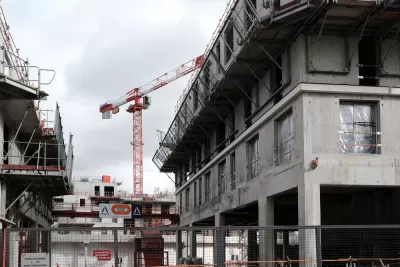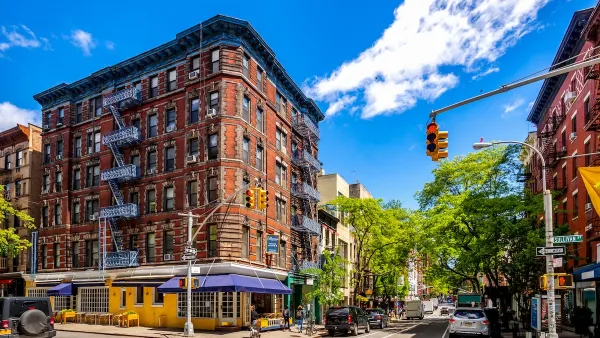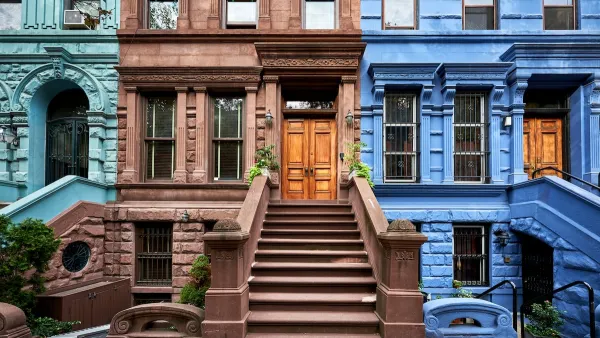France passed a law that required cities to have a certain percentage of social housing. Since then the country's most exclusionary cities and suburbs have seen a fivefold increase in the availability of social housing.

In December 2000, France adopted an ambitious new law meant to address the patterns of economic segregation that had left affordable housing concentrated heavily in lower-income, outlying suburban communities. Solidarité et Renouvellement Urbain, or Urban Solidarity and Renewal (SRU), mandated that French municipalities ensure that at least 20 percent of their total housing stock be “social housing,” subsidized affordable housing restricted to lower-income residents.
After more than a decade of weak compliance by cities, France revised the law in 2013 to increase the requirement to 25 percent social housing and increase the financial penalties for failing to comply. The amended law also included a threat: If communities didn’t start constructing social housing or converting existing buildings to social housing, the federal government would use eminent domain to do it for them.
More than two decades after the law’s passage, new research from the Lincoln Institute of Land Policy attempts to determine whether SRU has been effective in its aim to get every French city to do its fair share when it comes to providing affordable housing and how such a law could work in the U.S. Though many French cities have yet to meet the 25 percent social housing threshold, author Yonah Freemark, an Urban Institute senior research associate, says the law has been a success. For example, he found that France’s most exclusionary cities and suburbs have seen a fivefold increase in the availability of social housing since the law was passed. In the Paris metro region, the number of municipalities with less than 7 percent social housing was reduced from 86 cities to 45 as they increased their social housing stock.
Shelterforce spoke with Freemark to learn more about SRU, its efficacy and shortcomings, and the lessons the law holds for the United States and its own attempts and failings to address the concentration of poverty and expand affordable housing opportunities in exclusionary communities.
Josh Cohen: What is the SRU law trying to accomplish?
Yonah Freemark: The general goal of the SRU law as passed in 2000 was to combat the systemic problems of segregation and inequality that occur across French metropolitan regions. The idea was that by requiring a certain level of affordable housing in every community then the problems related to discrimination and segregation would be reduced. As initially passed in 2000, the law had some ambitious goals, but ...
FULL STORY: Could France’s Approach to Combating NIMBYism Work in the United States?

Maui's Vacation Rental Debate Turns Ugly
Verbal attacks, misinformation campaigns and fistfights plague a high-stakes debate to convert thousands of vacation rentals into long-term housing.

Planetizen Federal Action Tracker
A weekly monitor of how Trump’s orders and actions are impacting planners and planning in America.

San Francisco Suspends Traffic Calming Amidst Record Deaths
Citing “a challenging fiscal landscape,” the city will cease the program on the heels of 42 traffic deaths, including 24 pedestrians.

Defunct Pittsburgh Power Plant to Become Residential Tower
A decommissioned steam heat plant will be redeveloped into almost 100 affordable housing units.

Trump Prompts Restructuring of Transportation Research Board in “Unprecedented Overreach”
The TRB has eliminated more than half of its committees including those focused on climate, equity, and cities.

Amtrak Rolls Out New Orleans to Alabama “Mardi Gras” Train
The new service will operate morning and evening departures between Mobile and New Orleans.
Urban Design for Planners 1: Software Tools
This six-course series explores essential urban design concepts using open source software and equips planners with the tools they need to participate fully in the urban design process.
Planning for Universal Design
Learn the tools for implementing Universal Design in planning regulations.
Heyer Gruel & Associates PA
JM Goldson LLC
Custer County Colorado
City of Camden Redevelopment Agency
City of Astoria
Transportation Research & Education Center (TREC) at Portland State University
Jefferson Parish Government
Camden Redevelopment Agency
City of Claremont





























